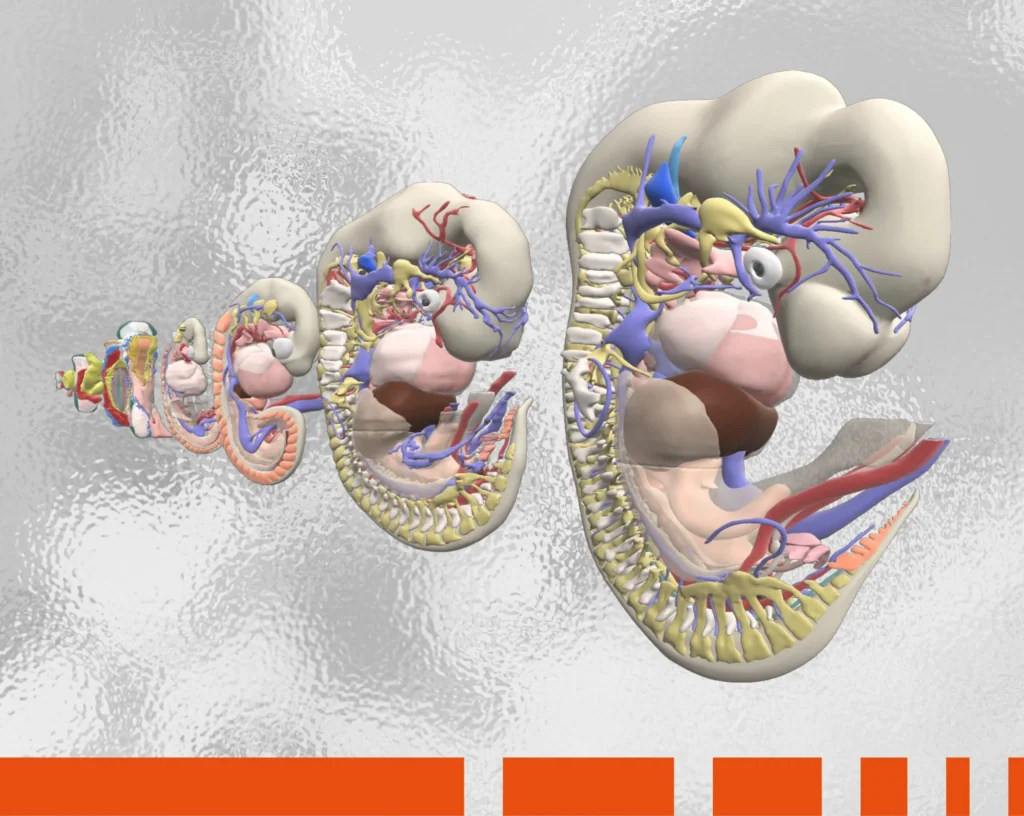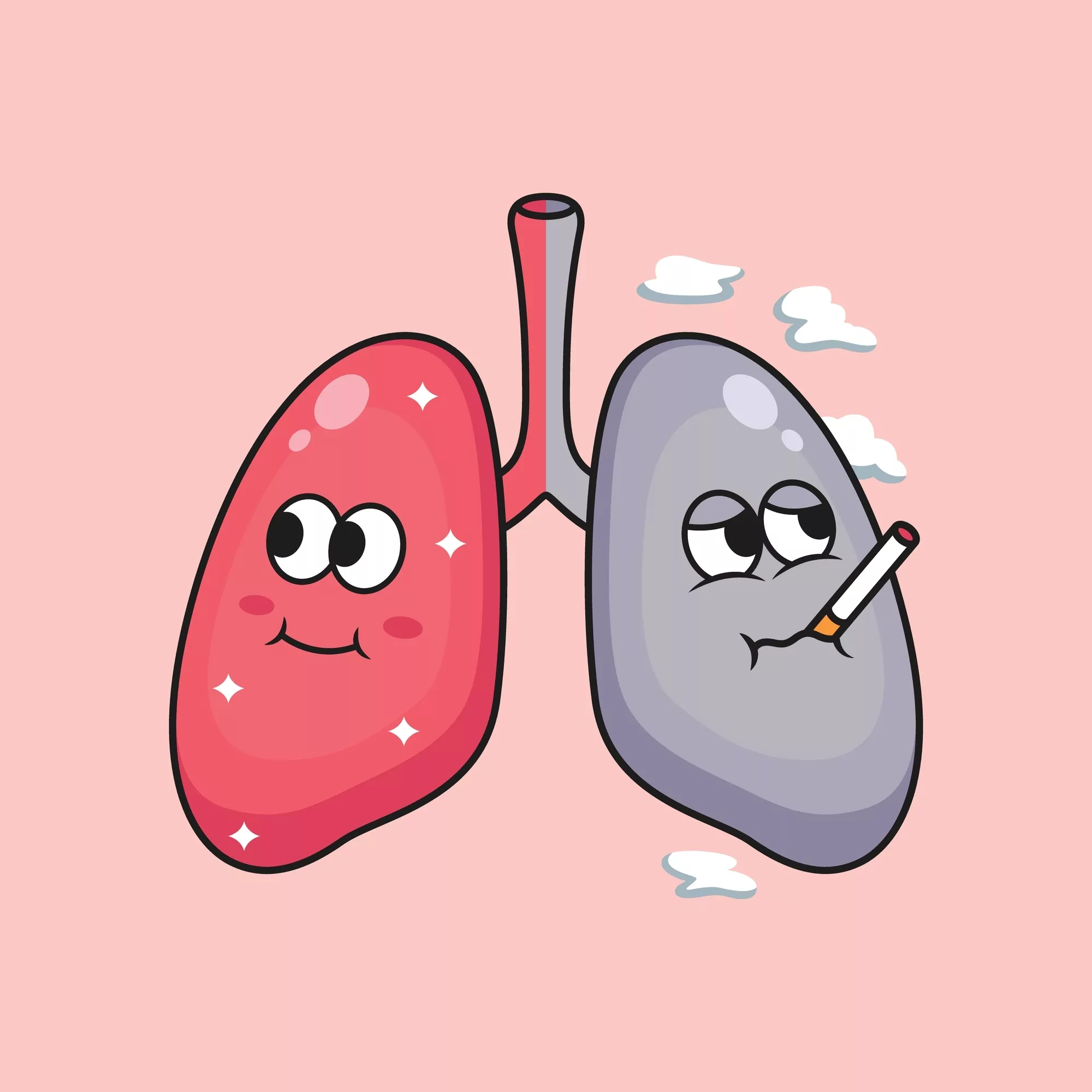Did you know that 50% of people who smoke suffer from worse symptoms of COVID-19 than those who don’t? Or that more than 8 million people worldwide die every year from smoking-related illnesses? While the smoking epidemic is subsiding, there are still more than 1 billion smokers.
Although the tobacco industry has come up with increasingly different products over the years to keep us hooked, introducing us to heated yobacco products (HTPs) and e-cigarettes for example, these can be just as dangerous to your health. HTPs still contain nicotine, and there needs to be more research into e-cigarettes that focuses on the increased risk of heart disease and lung disorders.
What makes tobacco and tobacco smoke dangerous?
The dangers of tobacco and tobacco smoke can be found in its 600+ ingredients and 5,000 chemicals that are known to be either toxic or promote the formation of cancer (carcinogenic) or both. Here, we break down the most common chemicals found in tobacco and how they damage your body:
-
- Nicotine – Although an organic compound, it has dangerously addictive qualities.
- Carbon monoxide – It’s quicker at binding to red blood cells than oxygen. This means your important organs, such as the heart, can become starved of oxygen, leading you to be easily out of breath and more at risk for a heart attack or stroke.
- Formaldehyde – It can damage the small hair-like projections lining the lungs called cilia and prevent them functioning correctly to remove harmful particles from your lungs.
- Acrolein – It has a strong acrid smell, can irritate the eyes, nose and throat, can cause lung damage and has been linked to heart disease.
- Free radicals – Found in nitrogen oxide and other chemicals that are included in tobacco, these are unstable molecules that can damage healthy tissue, leading to illness and premature aging.
- Cadmium – Absorbed from the soil where tobacco grows, this chemical can affect your lungs, kidneys and bones, resulting in COPD, emphysema or weakened bone density.
- Bronchodilators – They are added to tobacco products because they help open the airways, increasing the amount of dangerous smoke entering the lungs.
Why is smoking addictive?
Nicotine is the addictive chemical found in cigarettes and is absorbed quickly into the bloodstream. It makes the adrenal glands release the hormone epinephrine (adrenaline), which increases blood pressure, breathing and heart rate to make you feel more alert. It also floods the brain with dopamine, the hormone that plays an important part in movement, memory, motivation and pleasurable rewards. Dopamine combined with epinephrine makes the user experience a rush of pleasurable feelings. When this fades away, the user can feel irritated and edgy, making them want another cigarette. It can be hard to quit smoking, as these withdrawal symptoms demonstrate:
-
- Dizziness
- Anxious, irritable or depressed feelings
- Trouble sleeping and trouble concentrating
- Headaches
- A tightness in the chest
- Sore throat, cough and dry mouth
- Increased appetite resulting in weight gain
How smoking affects different body systems
Respiratory system – This is the system in your body that’s most damaged by smoking. When you breathe, oxygen travels through your mouth, down your throat and windpipe (trachea). The trachea then divides into the bronchial tubes called bronchi. From here, it enters the lungs, dividing into smaller air passages called bronchioles, and then into air sacs called alveoli. There are about 600 million alveoli in your body, which are surrounded by tiny blood vessels called capillaries that pass oxygen into your bloodstream.
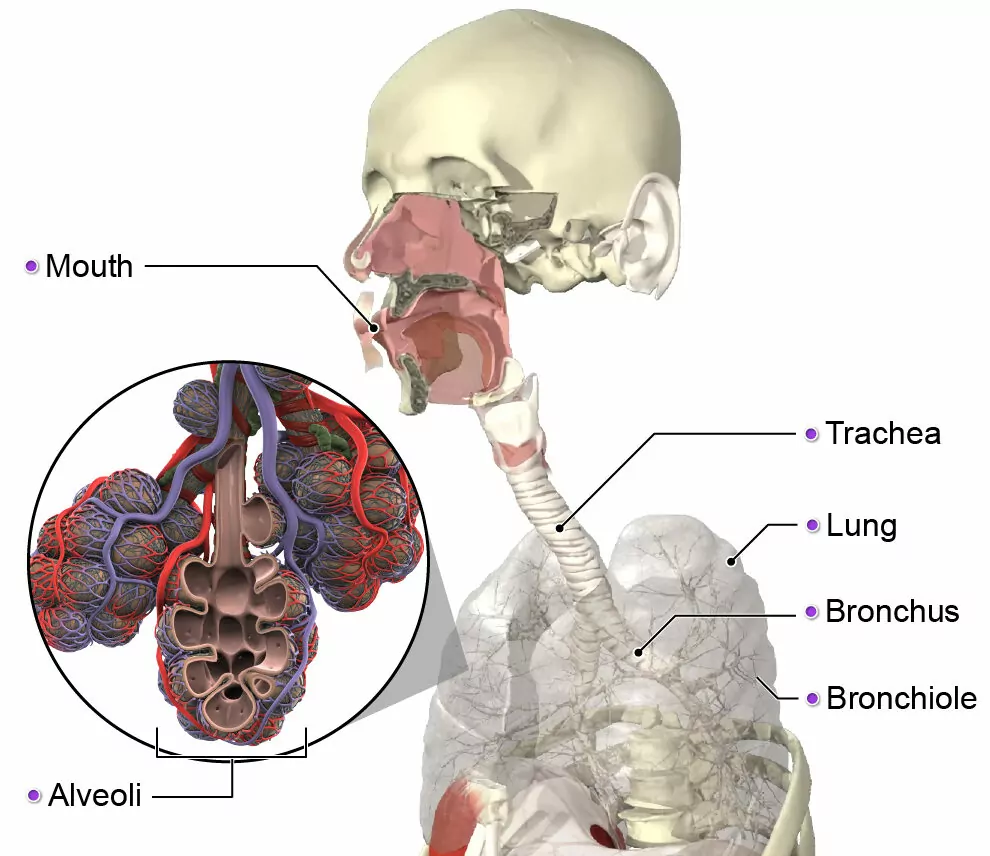
The amazing part of your lungs is their ability to protect themselves. The air we breathe carries germs as well as oxygen, and one of the most important functions of the lungs is to produce mucus, which keeps our lungs clean by lubricating and catching waste material.
However, when the lungs are overwhelmed with dangerous substances, such as cigarette smoke, they cannot always rid the body of this unwanted material. As previously mentioned, acrolein and formaldehyde damage the precious cilia, reducing the effectiveness of the lung’s defense. The inability of the cilia to remove this waste material can result in a “smoker’s cough.”
Long-term smoking can have serious clinical consequences, as outlined below:
-
- Asthma – A buildup of mucus in the lungs that causes the bronchioles to thicken and scar, making it difficult to breathe.

-
- Chronic obstructive pulmonary disease (COPD) – COPD can occur because smoking affects the ability of the bronchioles, alveoli and surrounding capillaries to work properly. They become inflamed or swollen, reducing the amount of air traveling to the lungs.
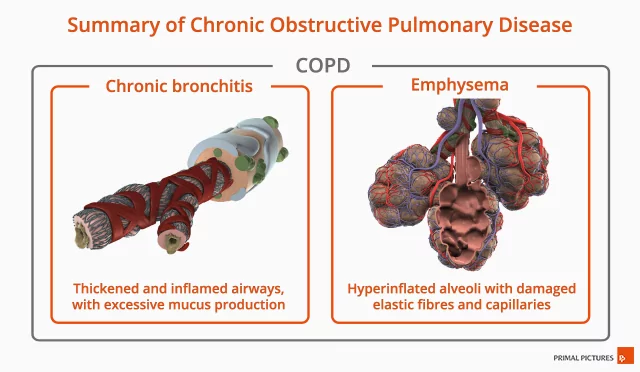
-
- Pneumonia – As smoking damages the cilia, mucus production is increased, but because it is unable to move back up through the lungs, waste material pools inside the lungs. This can cause an infection that can lead to pneumonia.
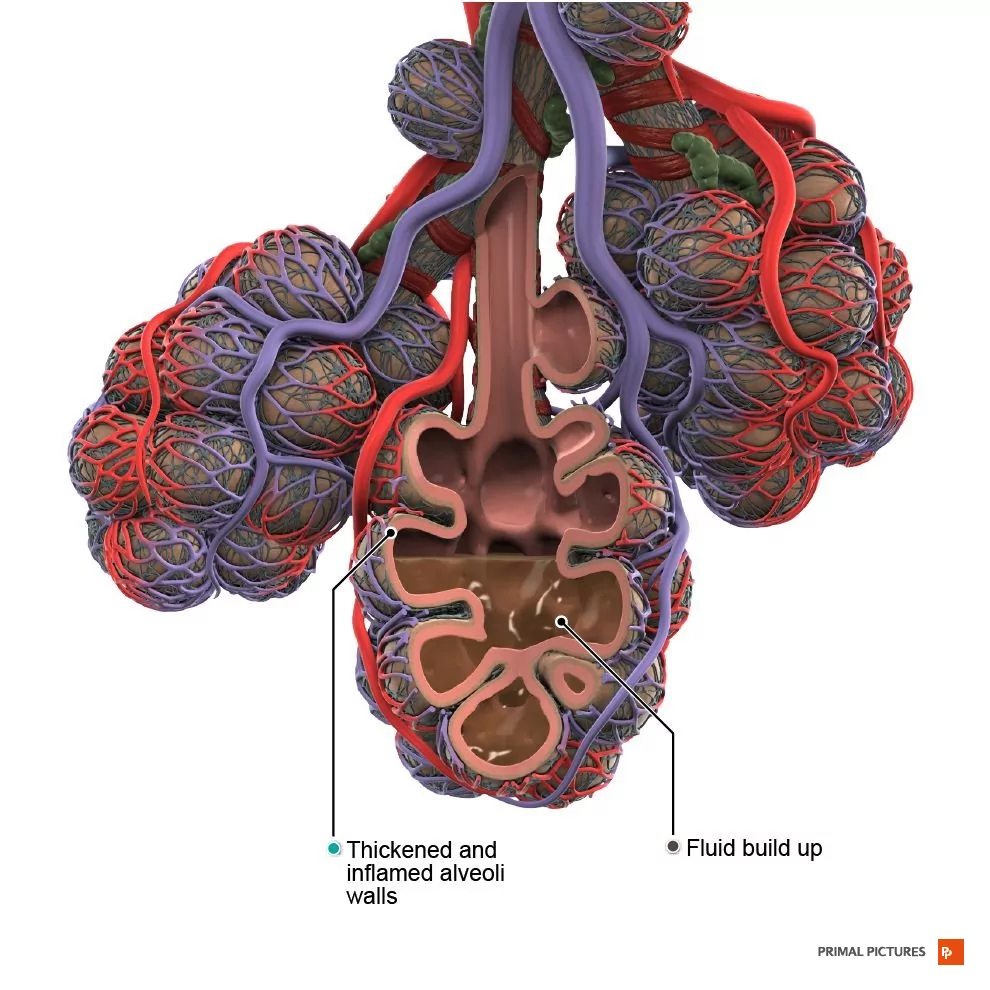
-
- Lung cancer – The main cause of lung cancer is smoking because the carcinogenic chemicals in a cigarette can damage the lungs. They can also mutate your DNA, causing tumor(s) to develop. Depending on the size and location of the tumors, lung cancer can cause blocked and bleeding airways, heart complications, swallowing problems and excess fluid in the pleural cavity.
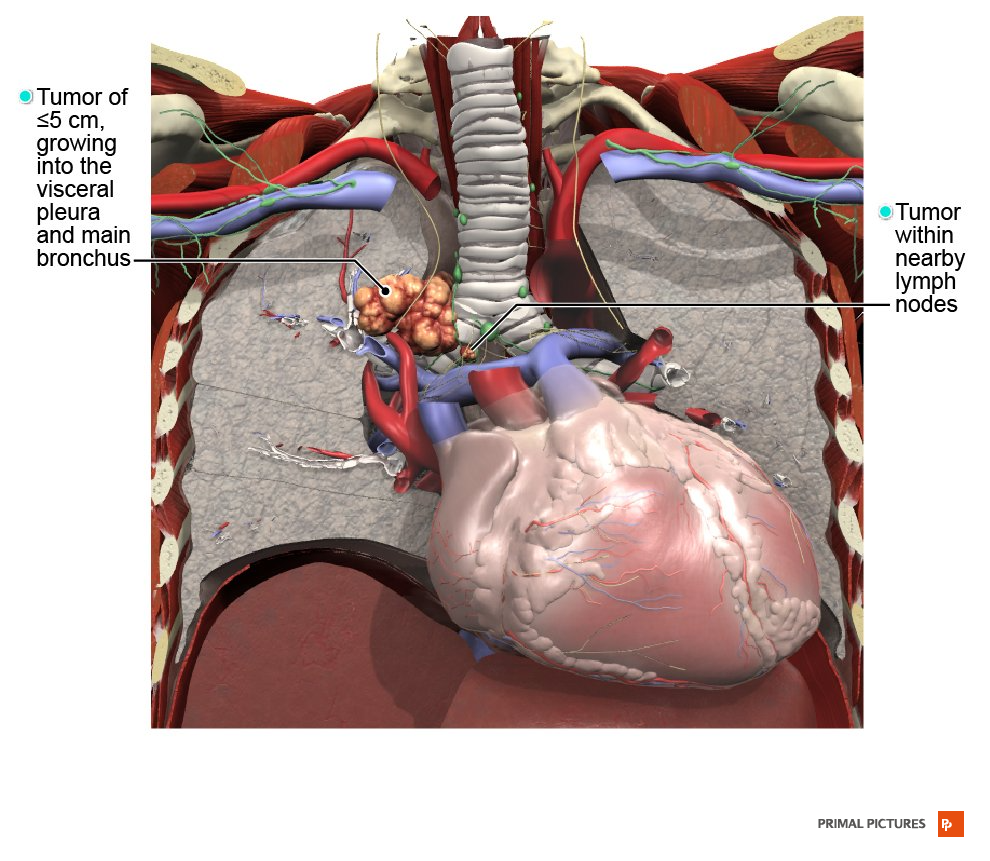
It is not only the respiratory system that smoking affects, but the rest of your body as well:
-
- Sexuality and reproductive system – Smoking can contribute to a lower sex drive and fertility issues, as it influences hormone production. Babies born to smokers can be premature, have a low birth weight or even be stillborn. Babies who are around smokers are at an increased risk of sudden infant death syndrome (SIDS).
- Cardiovascular system – Smoking weakens blood vessel walls, raises blood pressure and increases the risk of blood clots. These factors make you more at risk for a stroke, heart attack or sudden cardiac death.
- Integumentary system – Smoking affects your hair, skin and nails, resulting in premature aging and fungal infections. It speeds up the appearance of wrinkles and restricts wound healing.
- Digestive system – Smoking can increase the risk of several types of cancer of the digestive system including mouth, throat, larynx, esophagus, pancreas, stomach, colon and rectal cancer. In addition, smoking builds up a resistance to insulin meaning you are also more likely to end up with type 2 diabetes. It can also cause bacterial infections in your mouth and gum disease.
- Skeletal system – Smoking causes reduced bone density and decreases the ability of your bones to heal themselves, which in turn can lead to osteoporosis and tooth decay.
The benefits of stopping smoking – and ways to quit
It’s never too late to quit smoking because when you do, the effects can be pretty much immediate and you can reduce and even reverse the damage done to your body. Your blood pressure can return to normal after 20 minutes. Your breathing can improve after two weeks and your chance of a heart attack decreases after one year. All of this can result in feeling more energized, breathing easier and looking better – with more oxygen reaching your skin to make it brighter and less stained teeth. Your wallet will also thank you!
However, since nicotine is so addictive, what does it take to stop smoking? You could start with different treatments such as:
-
- Nicotine replacement therapies – These contain nicotine, but none of the other dangerous chemicals. They can help wean you off the drug by giving you smaller doses. They can be patches, a spray, gum or inhaler, all of which keep your cravings at bay.
- Prescription medication – Varenicline or bupropion taken in tablet form do not contain nicotine, but can help with withdrawal symptoms.
Along with physically curing smoking addiction, the psychological aspects need addressed too. Cravings usually last around five minutes, meaning this is the amount of time needed to distract you from a cigarette. You can try:
-
- Eating foods like cheese, fruit and vegetables – this makes smoking a cigarette afterward taste bad.
- Setting yourself up with another task when you would normally smoke, for instance doing the dishes straight after dinner instead of having a cigarette.
Lastly, think positively. You can do this! Remind yourself why you are quitting, and tell friends and family so they can see your progress and be on your side. Make an appointment with your doctor or healthcare professional who can recommend stop-smoking programs and nicotine replacement treatment. And most importantly, read this blog as a reminder of the harm smoking does to your body!
The images used in this piece have been taken from Primal’s 3D Atlas and Disease & Conditions products. To learn more about this or other Primal learning resources – please fill in the form here and our team will be in touch.
